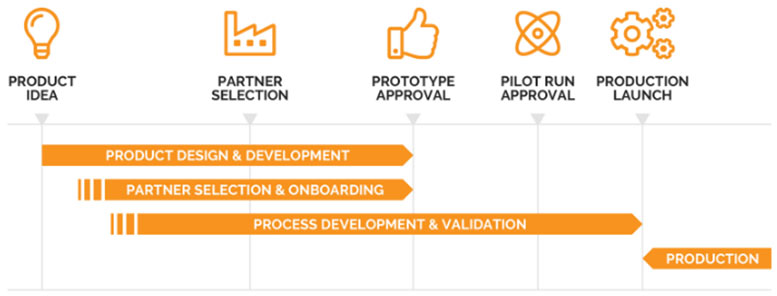
The New Product Introduction (NPI) process is a strategic approach used by organizations to bring new products or services to the market. It involves a series of well-defined stages and activities that encompass everything from product design and development to manufacturing, marketing, and launch. The NPI process is crucial for ensuring the successful introduction of innovative products, minimizing risks, and maximizing market acceptance. By following a systematic approach, organizations can streamline their operations, optimize resources, and increase their chances of a successful product launch.

Steps to Implement New Product Introduction Process
- Needs Assessment: Identify and understand customer needs and market demands for a new product.
- Planning: Develop a comprehensive NPI strategy, including timelines, budgets, and resource allocation.
- Idea Generation: Generate innovative product ideas that align with customer needs and market trends.
- Concept Development: Refine the product concepts and create detailed specifications and requirements.
- Design and Development: Design the product and develop prototypes or samples for testing and validation.
- Testing and Validation: Conduct rigorous testing to ensure the product meets quality standards and customer expectations.
- Manufacturing Preparation: Prepare for mass production by selecting suppliers, optimizing manufacturing processes, and establishing quality control measures.
- Production and Assembly: Begin manufacturing the product in large quantities while ensuring consistency and quality.
- Marketing and Promotion: Develop marketing strategies, branding, and promotional activities to create awareness and generate demand.
- Launch and Distribution: Introduce the product to the market through various channels, such as retail stores or online platforms.
- Evaluation and Feedback: Gather feedback from customers, monitor sales performance, and evaluate the product’s success in meeting objectives.
- Continuous Improvement: Use customer feedback and market insights to refine the product, address any issues, and make improvements for future iterations.
- Lifecycle Management: Monitor the product’s performance, make necessary updates or upgrades, and plan for eventual product retirement or replacement.
- Cross-Functional Collaboration: Collaborate closely with different departments, including design, engineering, marketing, and production, to ensure a smooth NPI process.
Importance of NPI Process
The NPI (New Product Introduction) process plays a crucial role in any project and offers several important benefits:
- Reduced Time-to-Market: Following a structured NPI process helps streamline product development and launch, resulting in reduced time-to-market. By defining clear steps and timelines, teams can work efficiently, minimizing delays and ensuring the product reaches the market faster.
- Improved Product Quality: The NPI process emphasizes rigorous testing and validation at various stages, ensuring that the product meets high-quality standards. This focus on quality helps identify and address any design or manufacturing issues early on, resulting in a superior product that meets customer expectations.
- Enhanced Cost Efficiency: Implementing an NPI process allows organizations to optimize resource allocation and minimize waste. By planning and monitoring each stage of the process, companies can identify potential cost-saving opportunities, improve efficiency, and reduce overall project costs.
- Effective Resource Management: The NPI process requires cross-functional collaboration and coordination. It ensures that resources, such as personnel, equipment, and materials, are allocated effectively throughout the project. This helps prevent resource bottlenecks and ensures smooth project execution.
- Increased Customer Satisfaction: The NPI process focuses on understanding customer needs and aligning product development accordingly. By incorporating customer feedback and conducting market research, organizations can deliver products that meet or exceed customer expectations, leading to higher levels of satisfaction.
- Risk Mitigation: The NPI process includes risk assessment and mitigation strategies. By identifying potential risks early in the project lifecycle, organizations can take proactive measures to address them. This minimizes the likelihood of costly errors, delays, or failures during the product development and launch phases.
- Scalability and Standardization: Implementing an NPI process allows organizations to establish standardized procedures and best practices. This enables scalability as the organization grows and facilitates the replication of successful product launches in the future.
The NPI process is a systematic approach to introducing new products to the market while considering customer needs, market trends, and organizational capabilities. It involves a series of interconnected steps that require collaboration, careful planning, and continuous improvement to ensure successful product launch and market acceptance.




